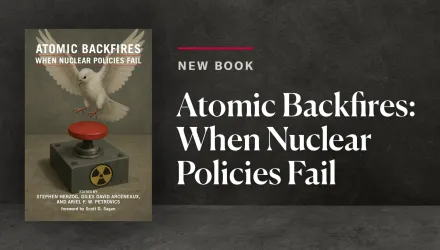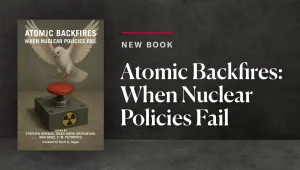Introduction
The flight-testing of the 60-kilometer (or 37-mile) Hatf-IX, or Nasr, ballistic missile in April 2011 has renewed controversy and debate about strategic stability and nuclear weapons in South Asia. Official statements issued by Pakistan’s Inter Services Public Relations Directorate (ISPR) claim that the Nasr was developed “to add deterrence value to Pakistan’s Strategic Weapons Development programme at shorter ranges.” The Nasr could carry “nuclear warheads of appropriate yield with high accuracy,” and had shoot-and-scoot attributes—essentially a “quick response system” that addressed “the need to deter evolving threats.”
This publication attempts to analyze various facets of the debate about tactical nuclear weapons (TNWs) following the introduction of the Nasr battlefield ballistic missile. The first section surveys different schools of thought in Pakistan about the issue of TNWs. The second section assesses the kinds of TNWs that Pakistan needs for effective deterrence, and assesses the relative importance of these weapons compared to Pakistan’s other strategic capabilities. This is followed by an evaluation of how TNWs impact Pakistan’s existing nuclear command and control system, how they interface with conventional forces and conventional force employment, and how they impact nuclear security and strategic stability in South Asia.
Ahmed, Mansoor. “Pakistan’s Tactical Nuclear Weapons and Their Impact on Stability.” Carnegie Endowment for International Peace, June 30, 2016
The full text of this publication is available via Carnegie Endowment for International Peace.





